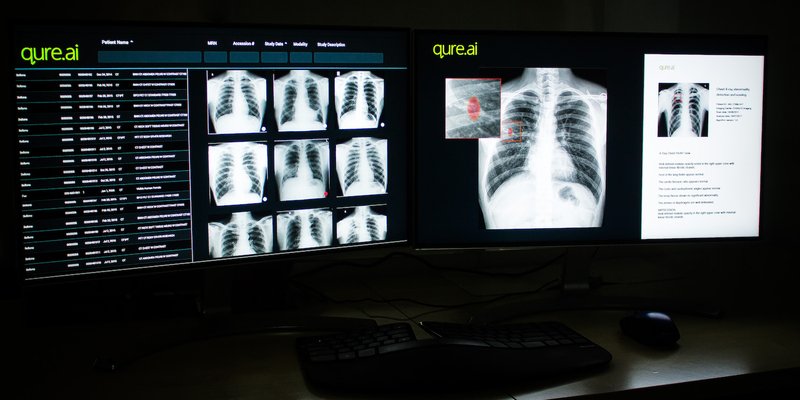
Companies: Delft Imaging, Qure.ai Products: CAD4TB, qXR
Breaking the threshold: Developing multivariable models using computer-aided chest X-ray analysis for tuberculosis triage
International Journal of Infectious Diseases, 2024
Abstract
Objectives
Computer-aided detection (CAD) software packages quantify tuberculosis (TB)-compatible chest X-ray (CXR) abnormality as continuous scores. In practice, a threshold value is selected for binary CXR classification. We assessed the diagnostic accuracy of an alternative approach to applying CAD for TB triage: incorporating CAD scores in multivariable modeling.
Methods
We pooled individual patient data from four studies. Separately, for two commercial CAD, we used logistic regression to model microbiologically confirmed TB. Models included CAD score, study site, age, sex, human immunodeficiency virus status, and prior TB. We compared specificity at target sensitivities ≥90% between the multivariable model and the current threshold-based approach for CAD use.
Results
We included 4,733/5,640 (84%) participants with complete covariate data (median age 36 years; 45% female; 22% with prior TB; 22% people living with human immunodeficiency virus). A total of 805 (17%) had TB. Multivariable models demonstrated excellent performance (areas under the receiver operating characteristic curve [95% confidence interval]: software A, 0.91 [0.90-0.93]; software B, 0.92 [0.91-0.93]). Compared with threshold scores, multivariable models increased specificity (e.g., at 90% sensitivity, threshold vs model specificity [95% confidence interval]: software A, 71% [68-74%] vs 75% [74-77%]; software B, 69% [63-75%] vs 75% [74-77%]).
Conclusion
Using CAD scores in multivariable models outperformed the current practice of CAD-threshold-based CXR classification for TB diagnosis.
Read full study